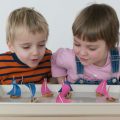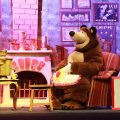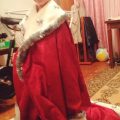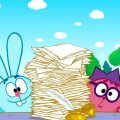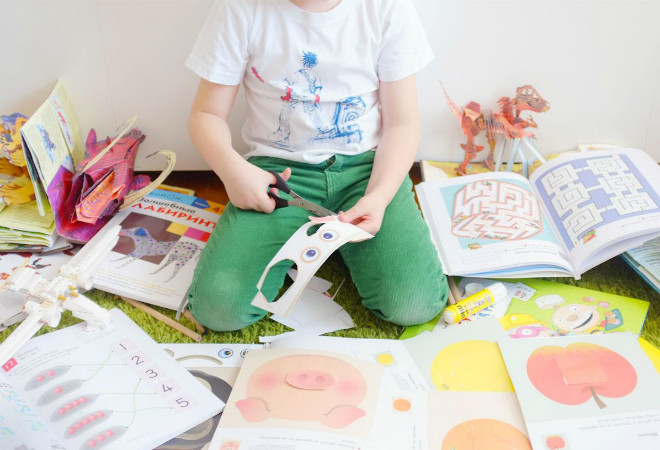 A photo: Publisher MythMethod Kumon based on the implementation of progressively more complex tasks. At the beginning of each notebook, the child does the simplest tasks, at the end - the most difficult ones. This approach allows us to achieve significant success. Tasks help children to become more attentive, more diligent, more self-confident, they form a love for self-study. Depending on the name of the notebook, parents will be able to understand exactly what skills they will develop from their children: “Learning to draw”, “Learning to cut”, “Learning to glue”, etc. All these skills contribute to the development of fine motor skills of hands, and, accordingly, intensify speech development, stabilize the psychological state. So it is or not, the teachers of the preschool department of the Moscow Lyceum No. 1451 decided to check. They, with the support of the publishing house Mann, Ivanov and Ferber, conducted an experiment in which they worked on notebooks with children.
A photo: Publisher MythMethod Kumon based on the implementation of progressively more complex tasks. At the beginning of each notebook, the child does the simplest tasks, at the end - the most difficult ones. This approach allows us to achieve significant success. Tasks help children to become more attentive, more diligent, more self-confident, they form a love for self-study. Depending on the name of the notebook, parents will be able to understand exactly what skills they will develop from their children: “Learning to draw”, “Learning to cut”, “Learning to glue”, etc. All these skills contribute to the development of fine motor skills of hands, and, accordingly, intensify speech development, stabilize the psychological state. So it is or not, the teachers of the preschool department of the Moscow Lyceum No. 1451 decided to check. They, with the support of the publishing house Mann, Ivanov and Ferber, conducted an experiment in which they worked on notebooks with children.
At the beginning of the journey
In the lyceum with the kids spent a fewpsychological tests. Many had impaired speech development, fine motor skills and visual-motor coordination. In total, the experiment involved three groups of children of different ages. The youngest children were 4 years old. They were offered to practice using the “Learning to Cut” notebook consisting of 40 tasks. Exercises in it develop fine motor skills and spatial thinking: first, the child must cut the paper in straight and wavy lines, then in a circle, and at the end of the notebook already cut out complex shapes. For one and a half months, the small participants in the experiment carried out one task every day, like requires a technique. - After successfully completing the assignment, as advised in the pages of notebooks, we praised the child for coping. When we started the experiment, the children did not know how to hold the scissors or work with them. Many impulsively and somewhat chaotically performed tasks: the paper is torn, scissors fall out, the children are worried that they are failing, says the teacher-psychologist of the preschool department of lyceum No. 1451, Anna Tretyakova.
First results
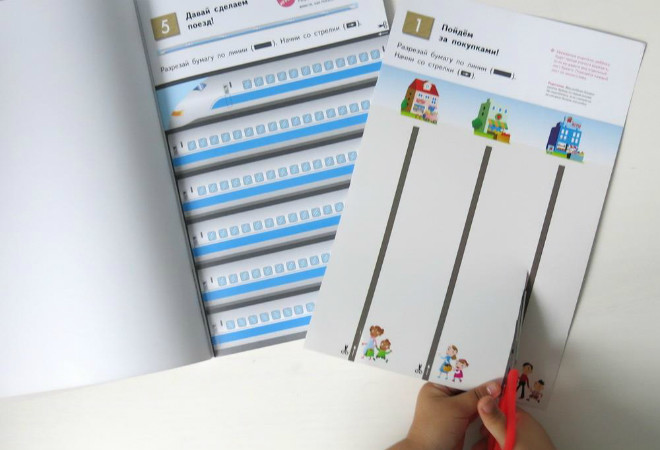 A photo: Publishing house MIFNa 7–8th lesson kids learned to hold the scissors, adjust the force of pressure and cut simple shapes. They liked to do it because they managed to cut it out. - I can say as a psychologist: as soon as a positive result appears, self-esteem and self-confidence increase. The child as if says to himself: “I did it. I can. I want even better, give me a job more difficult! ”- complements the educational psychologist. - One girl liked it all so much that she asked her parents to buy such a notebook home. She came every day to the garden and happily said: “We are now also cutting out the house!” Many children at the beginning of the experiment had very great difficulties: poorly developed motor skills, lack of attention and motivation. For example, one boy could not keep a pair of scissors, the paper was torn, he was upset and did not want to study. But after a few exercises, the situation changed: the child could not only hold the scissors and cut, he became interested in classes, and he became more diligent. It is also important that children change their attitude to work. Every day they get used to engage in a little bit of work, take responsibility for the task and acquire the necessary skills. So by the end of the six-month experiment, all the children had learned how to hold the scissors properly and cut them.
A photo: Publishing house MIFNa 7–8th lesson kids learned to hold the scissors, adjust the force of pressure and cut simple shapes. They liked to do it because they managed to cut it out. - I can say as a psychologist: as soon as a positive result appears, self-esteem and self-confidence increase. The child as if says to himself: “I did it. I can. I want even better, give me a job more difficult! ”- complements the educational psychologist. - One girl liked it all so much that she asked her parents to buy such a notebook home. She came every day to the garden and happily said: “We are now also cutting out the house!” Many children at the beginning of the experiment had very great difficulties: poorly developed motor skills, lack of attention and motivation. For example, one boy could not keep a pair of scissors, the paper was torn, he was upset and did not want to study. But after a few exercises, the situation changed: the child could not only hold the scissors and cut, he became interested in classes, and he became more diligent. It is also important that children change their attitude to work. Every day they get used to engage in a little bit of work, take responsibility for the task and acquire the necessary skills. So by the end of the six-month experiment, all the children had learned how to hold the scissors properly and cut them.




